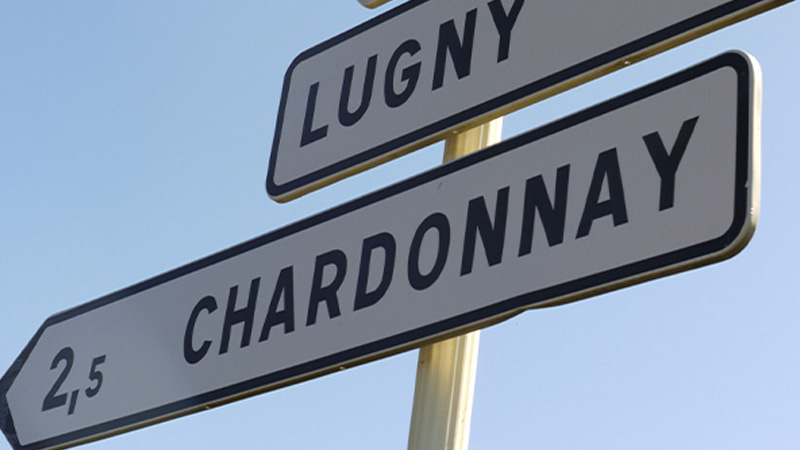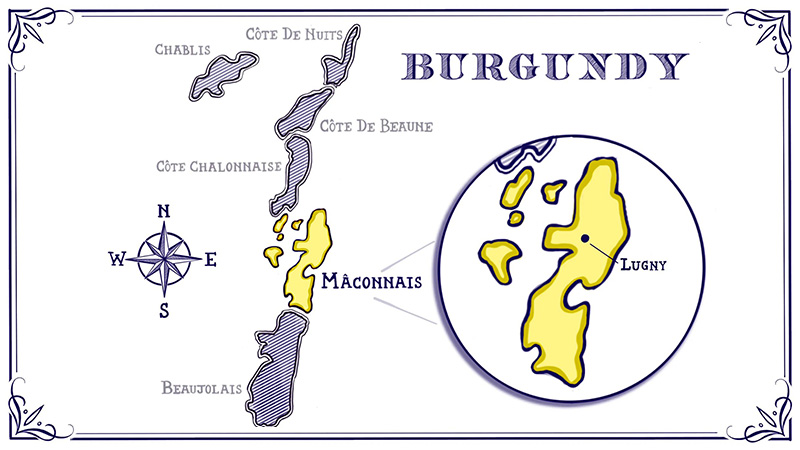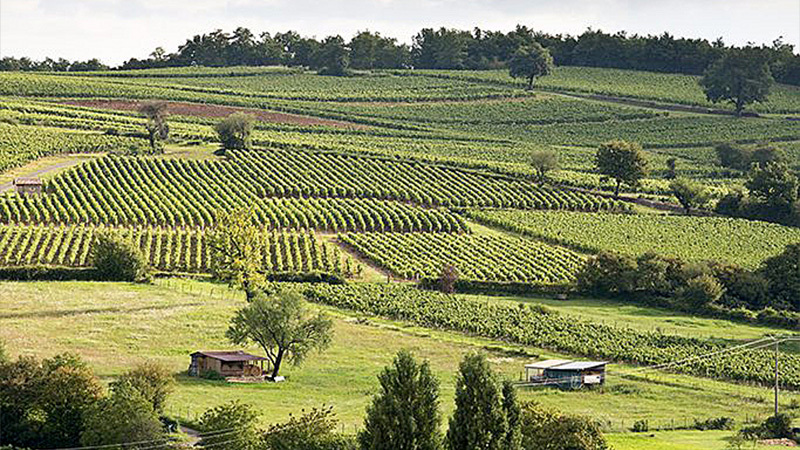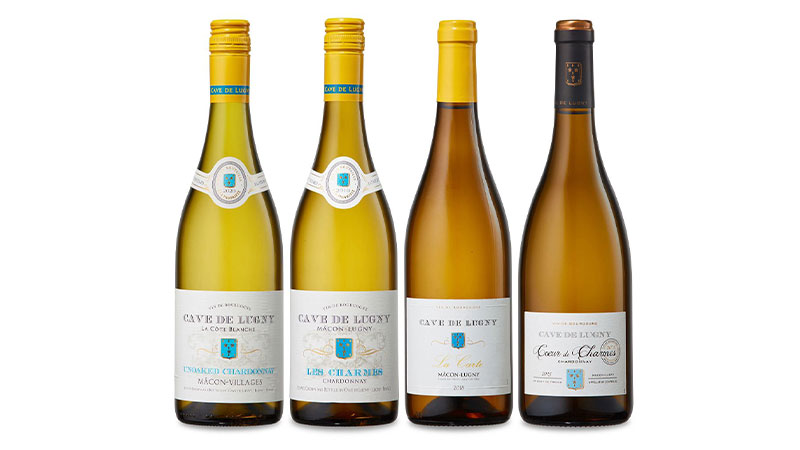
Can you keep a secret?
Because the wines from Cave de Lugny may be one of the best-kept secrets from Burgundy, France. We’re here to let you in on it, alongside expert sommelier Erica Catubig, with a little history and answers to the questions you haven’t asked yet. So kick back, relax, and keep your wine opener handy.

Exploring Nearly 100 Years of Winemaking
Located in the Mâconnais Appellation d’Origine Contrôlée (AOC) of Burgundy, today Cave de Lugny is a cooperative with over 400 members and 200 family-owned grape-growing estates. Rather than the more common négociant relationship where the grapes or juice are sold to an outside buyer, a cooperative of estates works together to make the best wine possible from the best grapes grown.
Cave de Lugny’s path to success in white Burgundy is based on progressive thinking. While most Burgundy producers are mired in tradition, Cave de Lugny embraces innovation through collaboration. Sharing agricultural and winemaking knowledge and practices, ensuring good working conditions, and fair wages have guaranteed its growth since being founded in 1926.
Dedicated to the future of sustainability in winemaking, Cave de Lugny’s practices follow the Vignerons en Développement Durable (Winegrowers in Sustainable Development). Despite the expansive planted acreage that is part of the Cave de Lugny co-op, innovative monitoring technology keeps a close watch on specific vineyard sites like Les Charmes, Coeur de Charmes, and La Carte.

Understanding the Cave de Lugny Difference
Chardonnay makes up 90 percent of the over 3,000 acres the grapes grown within the Cave de Lugny cooperative. All the resulting wines are unoaked and aged on the lees, letting the authentic flavors of the grapes come through. Sometimes tropical and crisp, sometimes nutty and rounder — the wines are always vibrant and delicious.
Producing wines grown in 20 different Burgundy appellations, Cave de Lugny is a hidden gem that “Burghounds” will undoubtedly flock to after trying for the first time. Often inside the bottle is declassified juice from the pricier appellations of Burgundy. The same terroir and climate, optimal farming and winemaking techniques, along with state-of-the-art bottling machinery guarantees bang for your buck.
What Makes Cave de Lugny Wines So Unique?
To fully understand the Cave de Lugny difference, VinePair tapped Erica Catubig, head sommelier at a luxury French restaurant in New York City, for her thoughts on what makes Cave de Lugny wines so special.
What are the characteristics of Burgundy-produced Chardonnay like Cave de Lugny?
Burgundian Chardonnay tends to have higher acidity and more minerality, making it a bit fresher compared to its mass-produced California counterparts. Perfect for lighter dishes, especially in the summer, like for cookouts and ripe summer vegetables.
Why don’t more co-ops exist within the wine world if they can help bring up quality and bring down costs?

This is a question with a lot of answers. Historically in Burgundy, the Napoleonic code fractured and divided so much of the land that specificity defined its terroir. In 1804, the Napoleonic Code revolutionized the entire French legal system. Landowners were now required to divide the land equally among their heirs. In some cases, vineyards were subdivided right down to just a few vines, making real estate in Burgundy very complicated.
Co-ops are the opposite of specificity, many parcels combined to create a cépage, or a specific grape varietal, that can be bottled under one label. Essentially, these poor farmers were making their wines via co-op. A single village would use each other’s machines, buy barrels from each other but bottle under their own labels.
What is a typical French meal to have with a Cave de Lugny white Burgundy?
Typical French meals are the simple spring and summer ones. Like fresh salads, classic radish and butter, and cheese and bread.
What is an underrated American food pairing for this style of Chardonnay?
An underrated pairing is cold fried chicken! Ideally on a picnic! In fact, all the picnic foods are delicious with these wines!
Why should Americans give Cave de Lugny white Burgundy a try if they haven’t already?
One of the reasons Americans haven’t tried Burgundy Chardonnay is often the price tag. What’s available in stores is more expensive and what’s available in restaurants is very expensive. Cave de Lugny is a great introduction to Burgundy, giving an excellent quality-to-price ratio. The majority of Burgundy is out of normal people’s price range. Well-known appellations like Chablis and Pouilly-Fuissé are getting so expensive. Much of what Cave de Lugny has to offer gives the same quality, minerality, and acidity without the price tag that comes with a familiar name.

What do you think about the 2021 Cave de Lugny Les Charmes you tasted?
This is the perfect everyday wine to keep in the fridge. Use a little to deglaze a pan of chicken cutlets or stir-fry and pour a little in a glass for you. It’s mineral-driven with a finish of tropical fruits like pineapple and guava but has a backbone of ripe yellow apple skin.
You also tried the 2018 Cave de Lugny Coeur de Charmes. How did the two wines differ?
The concentration of flavor really lends itself to aging. This wine already has a few years in bottle and it’s still vibrant and lively. I believe it will be a great bottle to add to your cellar. Minerality drives this wine but it has a creamy texture with notes of lemon oil and ripe green apple.
While Chardonnay is the star of Cave de Lugny’s portfolio, don’t overlook its sparkling wines. Choose a Cave de Lugny Crémant, the name for French sparkling wine produced outside of the Champagne region, for your next celebration or just drink with a plate of fries and Netflix. Cave de Lugny will never break the bank but will entice you to explore its entire portfolio.
This article is sponsored by Cave de Lugny.


